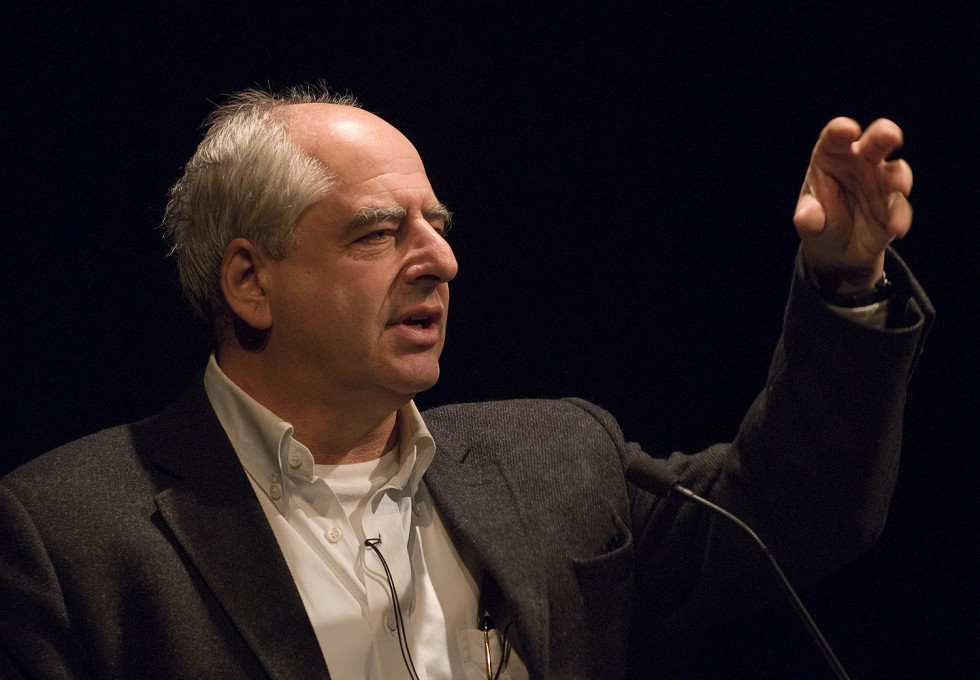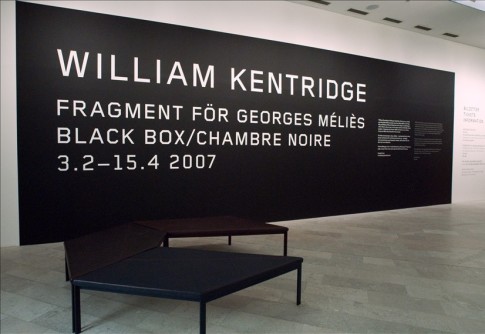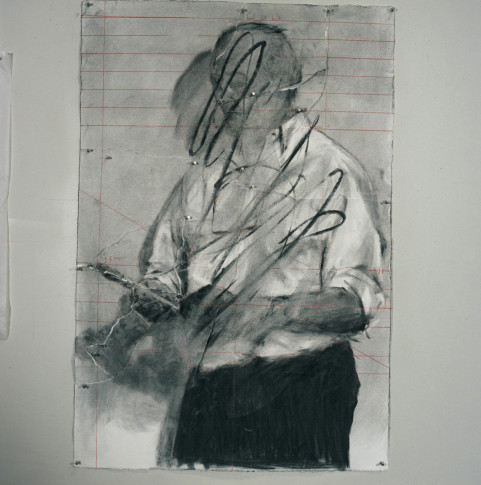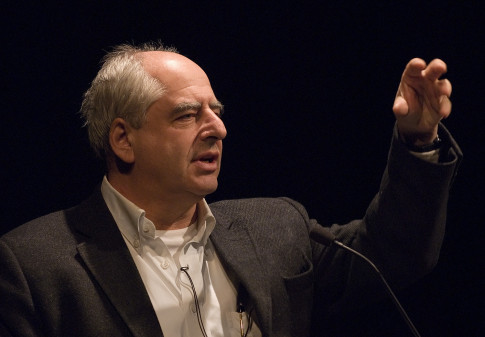
William Kentridge, 2007 At Moderna Museet February 2007. Photo: Albin Dahlström/Moderna Museet
William Kentridge
The presentation is a follow up to Kentridge’s Johannesburg 2nd Greatest City after Paris which was shown at the recent group exhibition Africa Remix at Moderna Museet. This is one of Kentridge’s earliest animated short films and introduces the series Drawings for Projection that is a mainstay of his production spanning the years 1989 to 2003. In conjunction with his theatre work, as a scenographer and a director, the series can be viewed as the foundation for the themes that he developed in 7 Fragments for Georges Méliès and Black Box/Chambre Noire, particularly in regards to the act of creating as a continuous process and the art work as a reflection on humanity, memory and history.
Already in his first film, Kentridge began to develop what became a characteristic element of his work: the animation of entire sequences from a single sheet of paper. By having a fixed camera registering how he draws, erases, continues to draw and gradually alters the image, he depicts the transformations and movements that have come to define his work. The uninhibited flow of associations arising from when something suddenly turns into something else is reminiscent of the imagination of a child – there is no stopping the thoughts. However, the technique also carries a conceptual meaning. Each new frame carries the traces of the previous frames as wounds or memories from transformations and alterations, just as the present carries with it traces of our history and we carry with us our experiences.
In large parts of Kentridge’s oeuvre the subjects are also characterised by an interest in transformational processes, almost always with South Africa as the starting point. For example, the nine fictitious stories about Johannesburg, in Drawings for Projection, follow the city’s intrinsic societal development with its extremes, many layers and open ends. However, the geographic grounding never ties the work to a specific local context. The stories function as a framework for exploring universal human conditions, such as sorrow, pain and passion, rather than promoting an opinion or claiming the moral high ground, which is all too common in political art. Instead of authoritarian information, it is the image, the physical movement, the sound, the time, and the poetry of these elements that are Kentridge’s tools – and this makes us perceive the work and reflect on what we see.



